Experimenting on the Brain – Wallace brainwashes the bunnies in 'Curse of the Were-Rabbit'
Horror moments, Wallace & Gromit edition
‘Horror Moments’ is a light-hearted series examining horror-inflected scenes and themes in unexpected places. The ‘moments’ are published weekly on Thursday mornings, and I share bonus content on the history of magic, theatre, storytelling, and more on Monday afternoons – don’t forget to subscribe!
[Spoilers for Wallace & Gromit: Curse of the Were-Rabbit (2005), Saw X (2023)]
“Simply by connecting the Bun-Vac to the Mind-Manipulation-O-Matic, we can brainwash the bunnies,” cries Wallace, joining the machines together beneath the light of a full moon, “rabbit rehabilitation!”
His audience is not convinced.
“Once cured of their antisocial veg-ravaging behaviour” he continues, “the rabbits can be safely released without fear of reoffending.”
This is, of course, also the plot of A Clockwork Orange.
The Ludovico Technique is a fictional brainwashing treatment from Anthony Burgess’ 1962 novel A Clockwork Orange, later adapted for the screen by Stanley Kubrick.
It involves injecting a criminal subject (in this case the murderous rapist Alex De Large) with drugs that induce nausea and then showing them images of violence and sexual assault. Eventually, an association between the two sets in and the individual becomes averse to the thought of violence itself, thus forcibly becoming a respectable member of society.
It’s a story that raises questions about the nature of good and evil, of free will, and the ethics of mind manipulation.
Experiments on brains appear in lots of horror films, from hypnotism and drugging to electric shock therapy, lobotomy, and surgical intervention.
The fields at the heart of these stories, neuroscience and psychotherapy in particular, developed around the same time as cinema itself so horror films could explore their associated fears far earlier in their history in contrast to, for example, ghosts and demons which had had a long presence in literature, theatre, and art.
The history of the Frankenstein story reflects developments in real world surgeries, even if such films necessarily invent procedures that don’t (yet) exist. The brain transplant now feels like a canonical feature of the plot, like in Frankenstein Must be Destroyed (1969), but this isn’t how Mary Shelly describes the process of creating the monster in the original novel.
In the book, Frankenstein makes his monster 8 foot tall because he is building him entirely from scratch and the larger scale makes it easier to get the details right. The stolen flesh is repurposed, used to fashion new bones and veins. We are never told precisely how he manages this, but he does not stitch together whole parts of corpses as he finds them, nor does he salvage a brain, normal or ‘abnormal’ to transplant as a single whole organ.
The downscaling of the creature back to human size is in part simply because it makes it easier to film using an ordinary actor. It also has the added benefit of making what Frankenstein does in his laboratory feel as much as possibly like surgeries we recognise and, perhaps, fear. Thus the combination of Shelley’s powerful story and the practical realities of bringing it to screen created new opportunities for exploring concerns about the ethics of reshaping or creating life.
More recently Saw X (2023), the latest in the ever-disgusting Saw franchise, gave us a series of surgery-themed traps including one which sees the righteous serial killer Jigsaw forcing a medical scammer to remove part of his own cerebral tissue to escape death. There is no ancient history of tropes and myths associated with the visceral horror of such a scene: it is a torture suggested by new technology.
We’re clearly very worried about experiments on the brain. I can’t think of a single horror story where brain alterations of any kind have a happy outcome, even if the intent is to cure a villain as evil as Alex DeLarge.
It certainly doesn’t in Were-Rabbit. Wallace accidentally melds his mind with one particular rabbit, Hutch, giving Hutch a human-ish personality and turning Wallace into a monstrous hybrid who transforms in the light of the moon.
Wallace will learn his lesson and, happily, the effects of his experiment will be reversed. As our ability to manipulate the brain develops it will be fascinating to see how horror films, with their prominent role in depictions of brain interference, explore their implications. Next week we’ll turn from the brain to the eye when I explore the use of monster-vision in Were-Rabbit but until then,
Happy nightmares everyone!
Horror moments are posted every Thursday and a wide variety of articles exploring the history of magic, theatre, storytelling, and more are published on Monday afternoons.




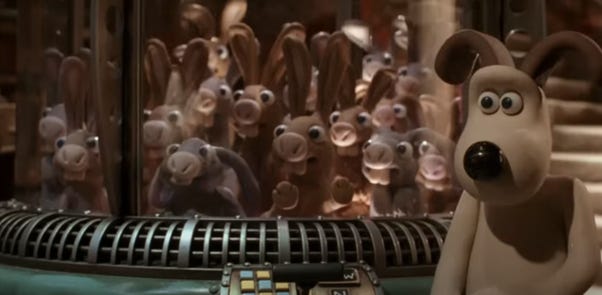
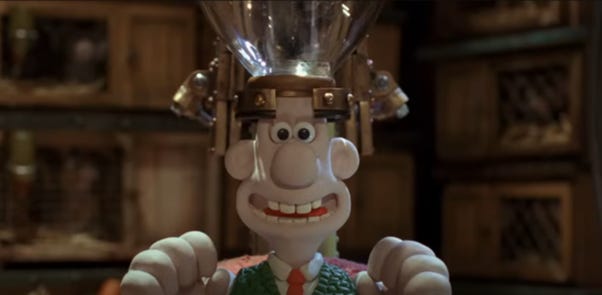
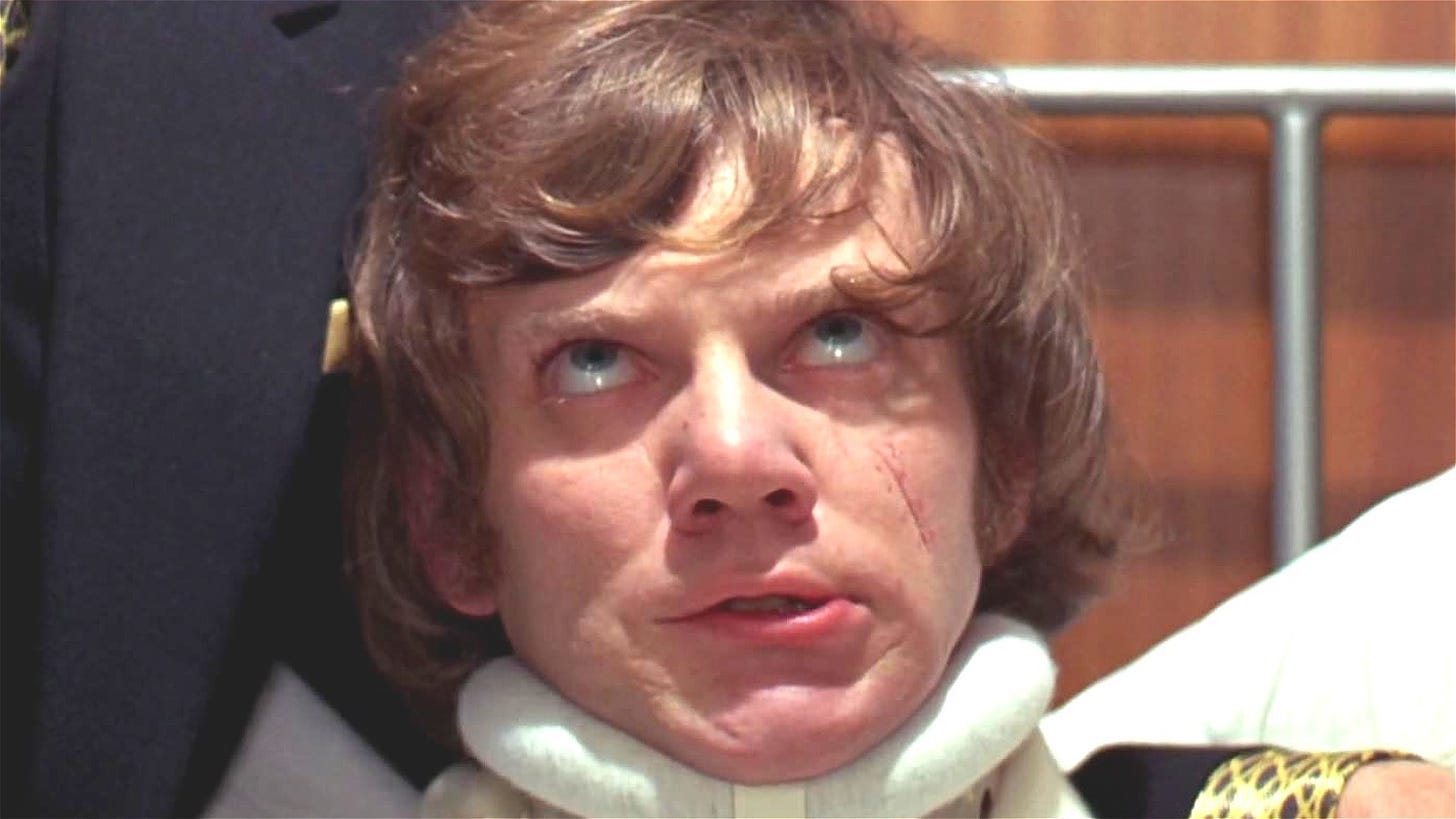
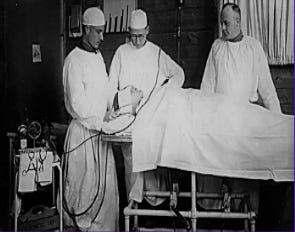
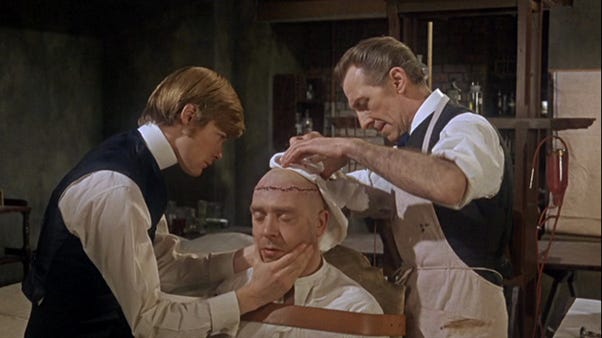
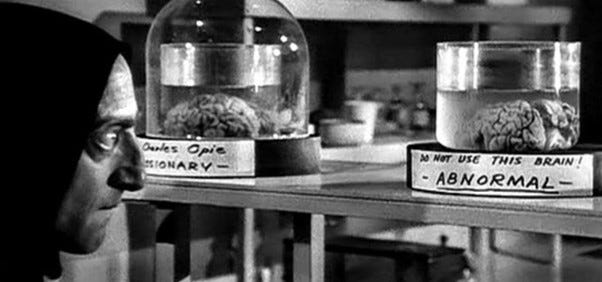

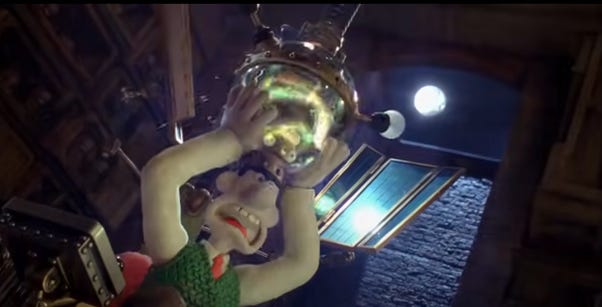
The Curse of the Were-Rabbit to Saw X pipeline is entertaining! I also appreciate Young Frankenstein’s abnormal brain on display here
I love the way you approach your topics! Way to go!